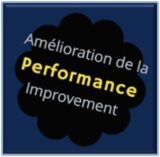Competency based approach explained
Here are the facts on Competency Based Approach
For the past 32 years I’ve worked with many organizations and clients worldwide where I’ve proudly implemented a competency based approach and where I made sure that the stakeholders, once I was gone, had the proper tools and training so that the competences are retained, and by giving them the proper observation and validation grids.
A Competency based approach is more than often misunderstood by non training experts and even by old school teachers and trainers. A large percentage of companies see a competence as someone who took a course and now knows the information and therefore can accomplish a task “competently”. “If I told him or her, they know how to do it.” Wrong!
A competence is more than knowledge
A competence is more than knowledge; it is a whole that comprises knowledge, know-how, behavior and as equally important – the context in which the work is being performed. One can be deemed competent in one area of an organization but once transferred to another, the context changes and the competence is therefore no longer “valid”. It has to be measurable and observable in a particular context.
Although different ways are being taught on how we describe a competence and how we word it, the basis is always the same: a competence is defined by a measurable and observable action verb and can be applied in any area of a plant, office or construction site.
here are some facts on the approach
- It saves time in training hours and workers’ hours ($)
- It is the base for all training objectives by ensuring we target the correct training in the most effective way
- It is based on know-how and knowledge specific for each job
- It removes all possibility of “nice to know” training
- It ensures workers are trained and proved competent to complete their tasks according to the organization’s guidelines
- It forces the organization to reassess/modify the competences on a regular basis whenever there is a change
- It targets all HSEQ aspects
competency assessment facts
- It has nothing to do with Efficiency or Comparison with others
- It does not measure execution Speed or Quotas
- It is NOT a Performance indicator
- It does NOT assess if one is good or bad at their job
- It measures if a worker is properly trained, safe and prepared to perform his/her tasks
- It gives the workers and the supervisors a base to improve the health, safety, environment and quality of products and services by creating a frequent dialog on the floor
- It gives the supervisors an extra tool to be closer to the floor and day to day operational tasks
- It tracks SOPs and Procedures and ensures everyone has been trained on them and their skills remain current
- It serves as a continuous improvement process
- It is a field proof that transfer of knowledge and skills was achieved directly on the tasks
- It ensures standardization of all tasks by generating discussions and interactions with everyone involved
- It helps detect gaps and faults in the overhaul training process
- It supports the succession planning by giving accurate monthly competency reports to supervisors and an up do date visual picture of their employees
To learn more go to the Competency Based Approach Page
Thanks for your comments and open discussion.
